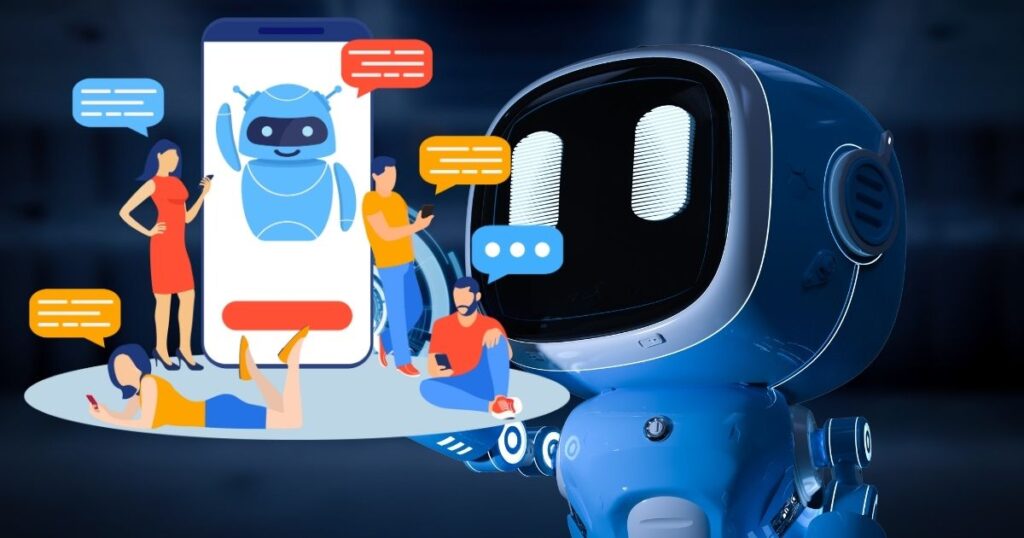The Rising Success of Virtual Assistants: 20 Inspiring Stories of Growth and Impact
In today’s rapidly evolving business landscape, the demand for virtual assistants has seen a significant surge. Companies and individuals alike are turning to virtual assistance to streamline their processes and increase productivity. The flexibility and convenience that virtual assistants offer have made them indispensable assets in the digital age.
In this article, we will explore the success stories of Virtual Assistants (VAs) in various niches, thanks to their ability to perform a wide range of tasks remotely. They provide support to businesses, teams, or individuals by taking on administrative tasks, thereby freeing up time for their clients to focus on more critical aspects of their work

Marketing and public relations
Countless success stories and case studies further illustrate the remarkable effectiveness of virtual assistants in the field of marketing and public relations :
There are several success stories and case studies demonstrating the effectiveness of virtual assistants in the field of marketing and public relations.
- Harp Mastery: In this case, a business owner named Anne Sullivan, who runs Harp Mastery, used a virtual assistant to handle tasks such as responding to emails, running a website, maintaining a blog, and keeping the business organized. With the help of her VA, Anne expanded her business presence into various social networks, including TikTok, Youtube, and LinkedIn. Her website now integrates merchandise and music downloads, and the business membership has grown significantly.
- Zus Health: Zus Health utilized a virtual administrative assistant to streamline their recruitment process. By organizing the interview schedule and dealing with correspondence, the VA saved the company 275 hours per month.
- Truffle Shuffle: This startup leveraged a team of VAs for sales, customer support, and admin work to interact with customers virtually. As a result, Truffle Shuffle hosted several sold-out cooking classes and expanded their recipe offerings, some of which were contributed by celebrity chefs guesting in their program.
- Yachtlife: This yacht rental and brokerage platform used a team of virtual sales assistants to qualify leads, organize databases, and encourage repeat purchases. This allowed their internal sales team to focus on building stronger relationships with current and potential clients. As a result, Yachtlife was able to boost overall sales, including closing a landmark deal worth $13.5 million.
These success stories demonstrate how businesses can use virtual assistants to streamline operations, improve customer engagement, and boost sales in the field of marketing and public relations. The use of VAs allows businesses to redirect their focus and resources to core competencies and strategic tasks, which ultimately drives business growth.

PR and marketing task
Virtual (VAs) also play a crucial role in supporting authors by handling PR and marketing tasks. They excel in selling books and promoting the author’s services, freeing up authors to focus on their core: writing. With the VA managing the business side of their work, authors devote their time and energy to their creative pursuits.
There are several case studies and success stories that demonstrate the effectiveness of virtual assistants in PR and marketing tasks, including selling books and promoting an author’s services.
- Virtudesk : Virtudesk, a company that provides virtual assistant services, helped entrepreneurs scale and automate their businesses through virtual assistants and technology. They offer highly-trained virtual assistants based in the Philippines, specializing in services such as real estate prospecting, marketing, administrative work, customer service, and transaction coordination. Although not specifically for authors, this case demonstrates how a virtual assistant can support in marketing and PR tasks, which can be applied to promoting an author’s services and selling their books.
- Tim Ferriss: Tim Ferriss, the author of “The 4-Hour Workweek”, famously used a team of virtual assistants to handle a range of tasks, including research for his books and managing his email. This allowed him to focus on writing and other high-value tasks. While not a traditional marketing or PR role, this demonstrates how virtual assistants can free up an author’s time to focus on promoting their work and engaging with their audience.
These case studies highlight the effectiveness of virtual assistants in handling PR and marketing tasks, including promoting an author’s services and selling their books. By taking over these tasks, the virtual assistants allow the authors to focus on their writing and other core tasks, ultimately leading to increased sales and a broader audience reach.

Managing events and websites, and handling social media marketing
Moreover, VAs can support speakers and coaches by managing teleseminars, creating and maintaining websites, and handling social media marketing. This allows speakers and coaches to concentrate on their presentations and coaching sessions, enhancing their productivity and effectiveness.
Numerous case studies and success stories further underscore the effectiveness of virtual assistants in managing events, websites, and social media marketing.
- Serve Team: The Serve team provides social media VAs with ample experience in managing social media accounts. Many influencers have chosen them to manage their accounts and have seen a considerable amount of growth in their followers.
- Premium Help: Premium Help, a virtual assistant agency with over 10+ years of experience, provides social media VAs who can manage different accounts, post on them regularly, and increase followers through effective engagement. They also conduct research to provide suggestions and sometimes edit content to make it more appealing.
- Make a Wish Foundation – Disney Social Media Case Study: The Make-A-Wish Foundation increased its social media reach, audience, and engagement by partnering with Disney in a Share Your Ears campaign. The strategy was simple: ask people to take a photo of themselves wearing Mickey Mouse ears, post it on social media with the hashtag #ShareYouEars, and a $5 donation would be made to Make-A-Wish. The results were unbelievable with over 1.7 million posted photos and 420 million social media impressions. This led to a 15% audience increase on Facebook and a 13% audience increase on Instagram with a total increase of 330% in social media reach and a 554% increase in engagement during the campaign .
- Meliá Hotels International – Hootsuite Social Media Case Study: Meliá Hotels International incorporated social media directly into its business model, both as a channel for client communication and as a platform to listen and learn about client needs and preferences. As a result, Meliá Hotel’s social media following grew from 5 million to 6 million in six months; an increase of more than 15%.
These success stories show how virtual assistants can effectively manage events and websites and handle social media marketing. By leveraging the skills and expertise of VAs, businesses can improve their online presence, engage with their audience more effectively, and ultimately, grow their business.

AI-powered virtual assistants
One of the most exciting areas of VA innovation is the field of AI-powered virtual assistants. These AI assistants streamline both verbal and digital customer interactions, saving time and money in the process. They offer technical capabilities, flexibility, customization, and the convenience of swift and seamless integration. The technology has matured rapidly, delivering proven real-world utility with diverse integrations and support for a wide range of web, mobile, and social media platform interfaces.
Yes, there are several case studies and success stories that demonstrate the effectiveness of AI-powered virtual assistants.
- Georgia Tech: Georgia Institute of Technology used an AI-powered teaching assistant named Jill Watson to respond to students’ queries in a master’s-level AI class. The students posted about 10,000 messages a semester to an online message board, a volume nearly impossible for a regular assistant to handle. Jill Watson, powered by IBM’s Watson, was able to handle the volume of queries, answering questions with a 97% success rate. This allowed the human teaching assistants to focus on more meaningful work.
- Michigan State University Federal Credit Union: Michigan State University Federal Credit Union utilized an AI-powered virtual agent named Fran. Fran has a 98% resolution rate and has taken on the future of customer service. This credit union also used another virtual agent that does the work equivalent of 33 Full-Time Employees.
- Nordea: Nordea, a Nordic banking leader, launched a dozen AI-powered virtual agents to improve customer experience. They cited the maturity of the boost.ai platform as a key factor in their decision.
- Sparebank 1 SR-Bank: Sparebank 1 SR-Bank used conversational AI to alleviate financial hardship for its customers during the height of the pandemic. They automated the mortgage deferment process end-to-end.
- Amtrak: Amtrak leveraged the Verint Intelligent Virtual Assistant (IVA) to provide instant service to its customers. The IVA, named “Ask Julie,” answers over five million questions annually, providing instant service to every visitor on the Amtrak website. This resulted in an 8x return on their chatbot investment.
These case studies highlight the effectiveness of AI-powered virtual assistants in various fields, from education to banking to transportation. They demonstrate how AI can handle a high volume of tasks, engage with customers effectively, and help organizations achieve their goals.

Customer experiences and sales
AI virtual assistants are also being used to improve customer experiences and boost revenue. For instance, with a modern cloud-based architecture, the tech side of coding and integration is fairly straightforward. Users can focus resources on conducting high-quality user-centered design sessions, striving to fine-tune customer interactions with their virtual system in ways that save time and deliver efficient and user-friendly experiences.
There are several case studies and success stories that demonstrate the effectiveness of virtual assistants in improving customer experiences and boosting revenue :
- Sephora: Sephora leveraged a virtual assistant known as the “Sephora Reservation Assistant” to provide a unique and personalized shopping experience. This virtual assistant helped customers try on different looks virtually, making it feel like having a personal makeup artist. The Sephora Reservation Assistant reported an 11% higher booking rate than other channels, and the Virtual Artist led to a significant increase in mobile sales, giving Sephora a competitive edge in the beauty retail industry.
- Amtrak: Amtrak used the Verint Intelligent Virtual Assistant (IVA) to provide instant service to its customers. The IVA, named “Ask Julie,” answers over five million questions annually, providing instant service to every visitor on the Amtrak website. This has resulted in an 8x return on their chatbot investment.
- Conversica: Conversica offers AI-powered virtual assistants known as Revenue Digital Assistants™ to supercharge revenue teams. Companies have used these assistants to engage with customers effectively and scale their teams. For example, Talkdesk used Conversica’s assistant to interpret what a lead is asking, reply back, and deliver the information to the Sales team. Hexagon used Conversica’s assistant to unlock hidden opportunity value within an hour of implementation, resulting in a 32x return on investment. Martindale-Hubbell used Conversica to identify customers initially interested in additional products, enabling their representatives to spend more time having productive conversations, resulting in a 2x increase in upsell dollars year over year.
- Leica Geosystems: Leica Geosystems used Conversica’s Revenue Digital Assistants™ and managed to increase conversions by 300% for a 23x return on investment.
- Magic: Magic is a virtual assistant platform that has helped various businesses hit their goals. One of the success stories on their blog highlights how a business owner used a virtual assistant to achieve a particular target. However, the details of the business and the specific target achieved are not provided.

These success stories are just a glimpse into the vast potential and opportunities that await aspiring virtual assistants. As the demand for virtual assistance continues to soar, individuals and businesses can leverage the expertise and flexibility of virtual assistants to enhance their operations and achieve remarkable growth.
To embark on a successful virtual assistant journey, it is crucial to identify a niche, undergo relevant training, and establish a strong online presence. Building a robust network and consistently delivering exceptional service are key to outshining competitors and attracting clients. By following these principles and learning from the inspiring stories of successful virtual assistant businesses, individuals can carve their path to success in the ever-evolving digital landscape.

In conclusion, VAs, whether human or AI, have improved various niches by taking over administrative tasks, enabling businesses and individuals to focus on their core competencies. They have also improved customer experiences and boosted revenue by streamlining customer interaction. Whether it’s marketing, PR, authorship, or coaching, VAs have proven their value in real-world applications.



